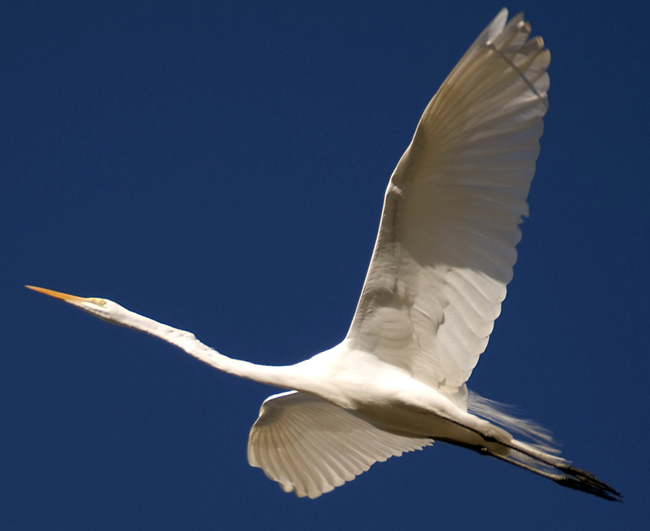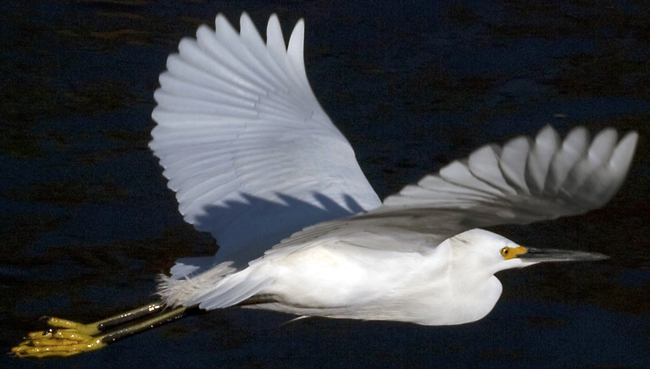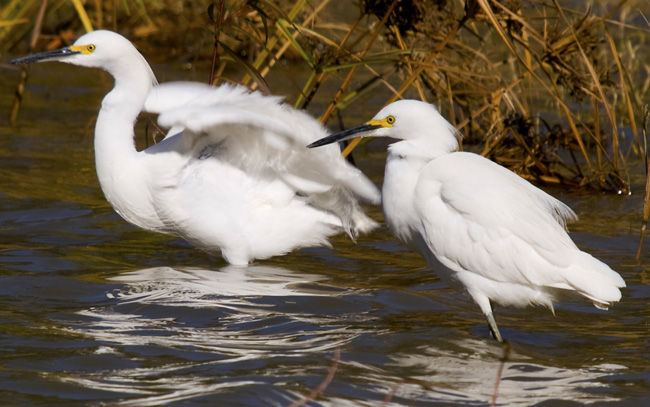Herons and Egrets
Today, herons and egrets. The University of Houston's College of Engineering presents this series about the machines that make our civilization run, and the people whose ingenuity created them.
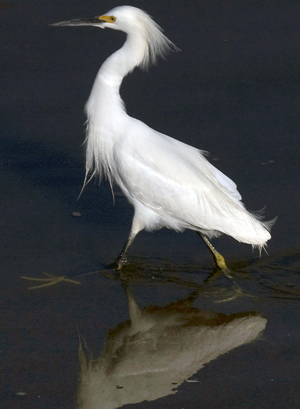 I should be careful, talking about birds. I'm far from being one of those highly-informed bird people who knows the form and habits of every subspecies. I'm just reaching the point where I can do more than tell little brown birds from big white ones.
I should be careful, talking about birds. I'm far from being one of those highly-informed bird people who knows the form and habits of every subspecies. I'm just reaching the point where I can do more than tell little brown birds from big white ones.
But my camera keeps informing me. Each time I study my day's catch on the computer screen, I find another creature I'd never heard of. Yet, despite the dazzling diversity out there, a year-round constant here on the Texas Coast is the heron. The heron, in its many forms, shapes our regional identity.
Heron is an umbrella term for bitterns, egrets, and many birds that are called herons. Herons generally have long necks, and generally fly with those necks folded in. In the air they look like stubby birds with deep chins. They usually wade the edges of waterways, picking up small fish or crustaceans. Still: I've watched them fly with necks outstretched. And I've watched them fish as gulls do -- flying low over water, scooping up prey in their bills.
 By the way, it's an education to watch different water birds fishing. Hawks fly high until they see a fish near the surface, then they swoop down to snatch it in their talons. Cormorants swim on the surface, then dive like submarines to hunt their prey. Some ducks, like the lesser scaup, also do that. But most ducks just upend and fish with their tail-feathers pointed heavenward.
By the way, it's an education to watch different water birds fishing. Hawks fly high until they see a fish near the surface, then they swoop down to snatch it in their talons. Cormorants swim on the surface, then dive like submarines to hunt their prey. Some ducks, like the lesser scaup, also do that. But most ducks just upend and fish with their tail-feathers pointed heavenward.
But back to herons: The great blue heron is the largest and most striking -- usually found alone with its seven-foot wingspan and gaunt grayish look. It stands in strong contrast to the white egrets, although the great white egret is almost as large. And my favorite is the less dramatic snowy egret.
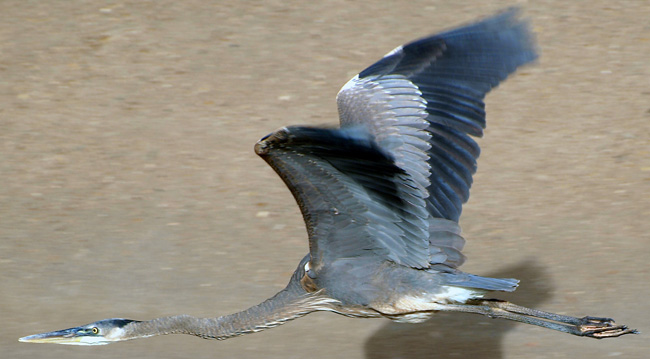
Lots of snowies live on our gulf waterways, and I never tire of them -- so beautiful in their ever-changing appearance. Long black beaks and yellow feet frame the purest shining white plumage. On a cloudy day, you might find a group with their necks tucked in, standing in the reeds like monks in a Chinese lithograph. Or you'll find one stalking the inches-deep water on the concrete bayou apron, looking for small prey. During breeding season, snowy egrets spread their delicate plumage out in seductive sprays.
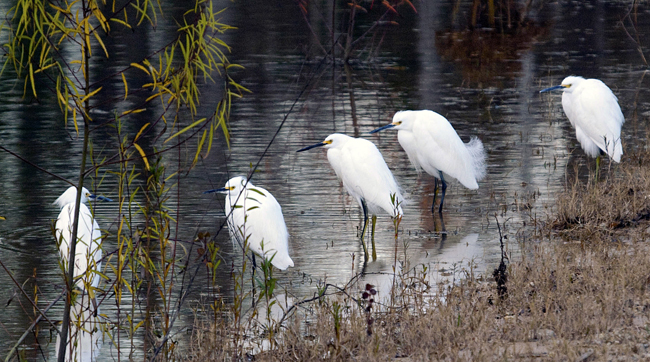
A century ago, that beauty almost led to their extermination. Snowy egret feathers were so prized for ladies hats, and egrets were so easy to hunt along the water's edge, that they almost vanished. Laws were finally passed to protect them, and now they thrive. Well, at least they do here in Houston. In other areas, their habitat dwindles. Here, our bayou system of water runoff sustains a fine home for them in the midst of a huge city.
And they really are magical birds. Mid-20th-century American poet Mary Oliver called a group of egrets,
A shower
of white fire!
She watched them in the shifting light and wrote,
... unruffled ...
they opened their wings
softly and stepped
over every dark thing.
I'm John Lienhard at the University of Houston, where we're interested in the way inventive minds work.
See the Wikipedia articles on herons, snowy egrets, and Mary Oliver. The full text of Mary Oliver's poem may be read in the plagiarist poetry archive.
For more on this theme, see Episode 2568. For more on the fight to save birds from milliners, see Episode 599. All photos by J. Lienhard.
